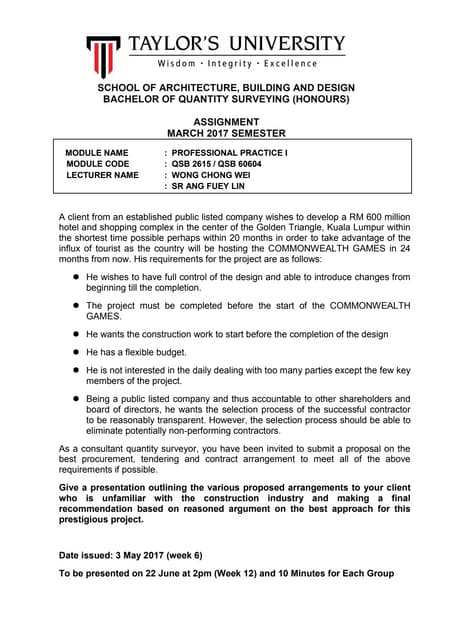

The advantages of this approach for the customer are significant. It is only once these issues are resolved during stage one of the process that the contractor enters into a detailed contract negotiation with the customer to agree the final price, the contract conditions and the agreed programme.

The chosen preferred contractor then assists in the design and development of the construction issue drawings, helps to develop a workable method statement and develops relationships with the supply chain to gather critical information. This is a much shorter, less labour-intensive process for the bidding contractors and only the preferred bidder is taken forward to the next stage. This involves submitting a price for assisting the customer in designing the building, together with a schedule of rates that will be used to form a fixed price for the complete works during stage two. In the first stage of a two-stage process, the customer provides an outline project design and contractors then compete for preferred contractor status. Of course, many single-stage tender processes proceed without these issues having received due attention, which is where much of the risk lies! How Does The Two Stage Approach Differ? If procuring via a single-stage route, it is important that the customer can say confidently that the design is sufficiently developed and robust, and realistic evaluations of issues such as budget, project delivery timeframes and key risks have been considered prior to tendering. What Are The Drawbacks of Single-Stage Procurement? With commentary from leading contractors GRAHAM and Interserve Construction Ltd, in this blog, Robbie Blackhurst discusses why customers are increasingly moving away from single-stage and traditional procurement routes in order to deliver better project outcomes and weighs up Single stage vs Two Stage. Two-stage procurement provides some of the answers increased levels of collaboration and early contractor involvement leads to opportunities to de-risk highly technical or logistically challenging projects.

TWO STAGE TENDERING ADVANTAGES AND DISADVANTAGES FULL
The government’s Construction 2025 strategy suggests that customers are not achieving their full project value potential because of ineffective procurement, this is a real problem for public sector customers especially during these challenging economic times. Single Stage vs Two Stage is a question we regularly face, whilst not a new method of procurement, two-stage tenders are becoming an increasingly popular choice for both contractors and customers in the construction sector.


 0 kommentar(er)
0 kommentar(er)
